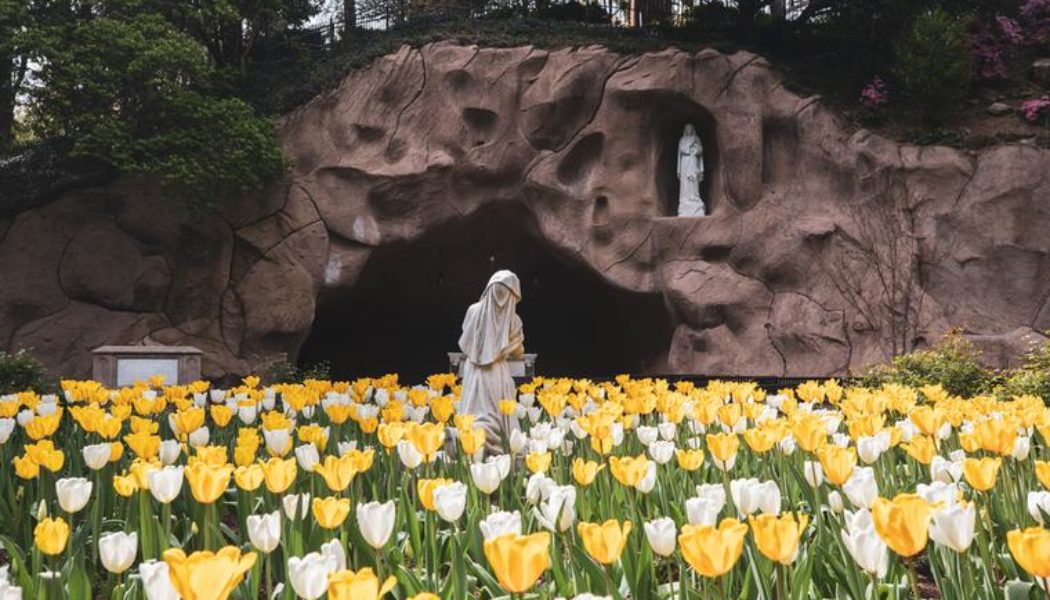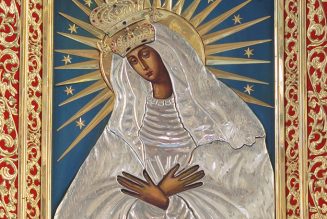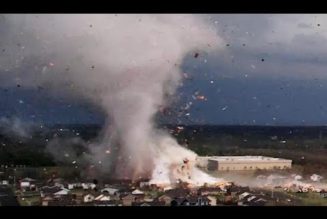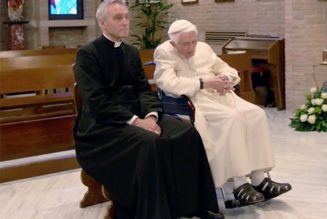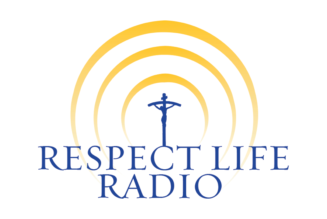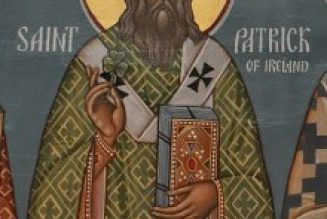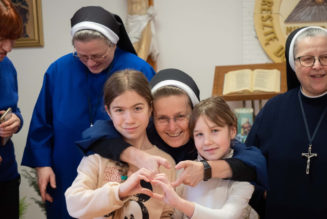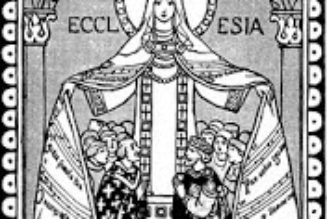
On March 25, 1887, having just received his red hat as a cardinal from Pope Leo XIII, Cardinal James Gibbons of Baltimore made what was, for him, a famously cautious man, a bold statement. Speaking in Santa Maria in Trastevere, the ancient Roman church that had been assigned to him as his “titular” church in Rome, the new cardinal praised church-state separation in the U.S. in glowing terms.
Very often, Cardinal Gibbons said, the Catholic Church had been “hampered in her mission and has had to struggle for a footing wherever despotism has cast its dark shadow.”
But not in the United States. There, he said, “in the genial air of liberty she blossoms like the rose.”
As Church historian Msgr. John Tracy Ellis remarked, Cardinal Gibbons said that at a time of “severely strained relations” between the Church and the anticlerical governments of Germany, Italy and France — “countries where there had been a long tradition of union of Church and State.”
Not only that, Pope Leo, like Pope Pius IX before him, was the self-declared “prisoner of the Vatican,” a situation prevailing since 1870, when troops of the Italian reunification movement had seized Rome and the Pope had retired behind the high walls of the Vatican. Reconciliation between the Italian government and the Holy See did not happen until the 1920s, when Pius XI formally received the territory of the tiny Vatican City along with cash for what the popes had lost.
By comparison, the situation of the Church in the United States in 1887 was indeed enviable, although Cardinal Gibbons may have been rubbing it in a bit by noting “in this great capitol of Christendom” — Rome, that is — that he came from a country “where the civil government holds over us the aegis of its protection without interfering in the legitimate exercise of our sublime mission as ministers of the Gospel.” It is not recorded what the Holy See thought of that.
American Catholicism was growing fast when Cardinal Gibbons spoke, and it would continue doing that well into the century that followed. By 1970, there were 54 million Catholics in the United States, along with 37,000 diocesan priests, 22,000 religious-order priests, and 161,000 religious sisters. Priestly ordinations that year numbered 805. The 9,300 Catholic elementary schools and 2,000 secondary schools enrolled 3.4 million and 1 million students, respectively. More than half of U.S. Catholics attended Mass weekly or more often. And there were nearly 1.1 million infant baptisms.
By 1970, however, the numbers had already started to decline; and by 2022, the declines in all these categories were startling — with one notable exception: Catholic population, which had risen to 73.5 million, thanks largely to continued immigration.
But diocesan priests totaled just more than 24,000 and religious-order priests a little more than 10,000. There were 451 priestly ordinations. Religious sisters had suffered a huge drop and now numbered only little more than 36,000. Catholics who said they attended Mass every week were only 17% of the total.
Elementary schools had fallen to 4,750, with an enrollment of 1.2 million. At the secondary level, there were 1,200 schools with 528,000 students. Infant baptisms totaled 438,000.
The Catholic Church is by no means the only denomination to suffer a sharp numerical-institutional decline in the last half-century. The story is the same for virtually all other religious groups. That rules out blaming what has happened, as some people do, on the Second Vatican Council or the birth-control encyclical, Humanae Vitae.
While reaction to Vatican II and the encyclical may have given the Church’s decline a degree of “Catholic” coloring — just as other churches have had their own internal issues — the across-the-board religious drop of recent years reflects causes affecting all churches. The culprit, simply put, is the rise of aggressive, virulent secularization occurring in wealthy countries.
Religious faith simply no longer has the same hold on people as it once did — as is evident in the fact that one American in three is not affiliated with any religious body, and one in four is an atheist.
These days, too, there is an additional complicating factor for the Catholic Church: After years of the kind of friendly relations with the national government that Cardinal Gibbons hailed in his Roman address, the Church now finds itself facing an administration — headed by a Catholic president, no less — aggressively engaged in pushing pro-abortion, pro-LGBTQ policies wherever it can.
Whatever the cause or causes may be, the fact is clear: The Church in the United States is now well along in a long-term process of institutional contraction with no immediate end in sight. Conspicuous evidence of that is the growing number of dioceses that have closed or consolidated substantial numbers of parishes, or announced plans to do so, in the face of fewer priests and declining Mass attendance.
An official of a diocese with 80 pastors to cover 174 locations offered an explanation for its program of parish consolidation that would fit many other places as well:
“We have churches that were built for many more people than are attending Mass, and most parishes have constrained resources with significant expenses to maintain facilities.”
Are there any grounds for hope in this situation? In fact, there are. But in the nature of things, they lie in the future rather than the immediate present. In that connection, it helps to recall a remarkable set of predictions made in 1969 by a youngish German theologian named Joseph Ratzinger — the future Pope Benedict XVI — at a time when few other people were thinking like this.
Speaking of “the Church of tomorrow,” he said it would be “a Church that has lost much.” The Church “will become small and will have to start afresh more or less from the beginning. … The Church is facing very hard times. … We will have to count on terrific upheavals.”
But he didn’t leave it at that. Instead, Father Ratzinger predicted the emergence of a revitalized Church, smaller but also stronger and more spiritual. In the face of a secularized world, he said, “the future of the Church, once again as always, will be reshaped by saints, by [people] whose minds probe deeper than the slogans of the day, who see more than others see because their lives embrace a wider reality.”
We are now waiting for those saints to arrive. Meanwhile, recalling Cardinal Gibbons’ vision of a Church that “blossoms like a rose,” there is consolation in the fact that although rose bushes lose their blossoms in winter, they bloom again in summer.
